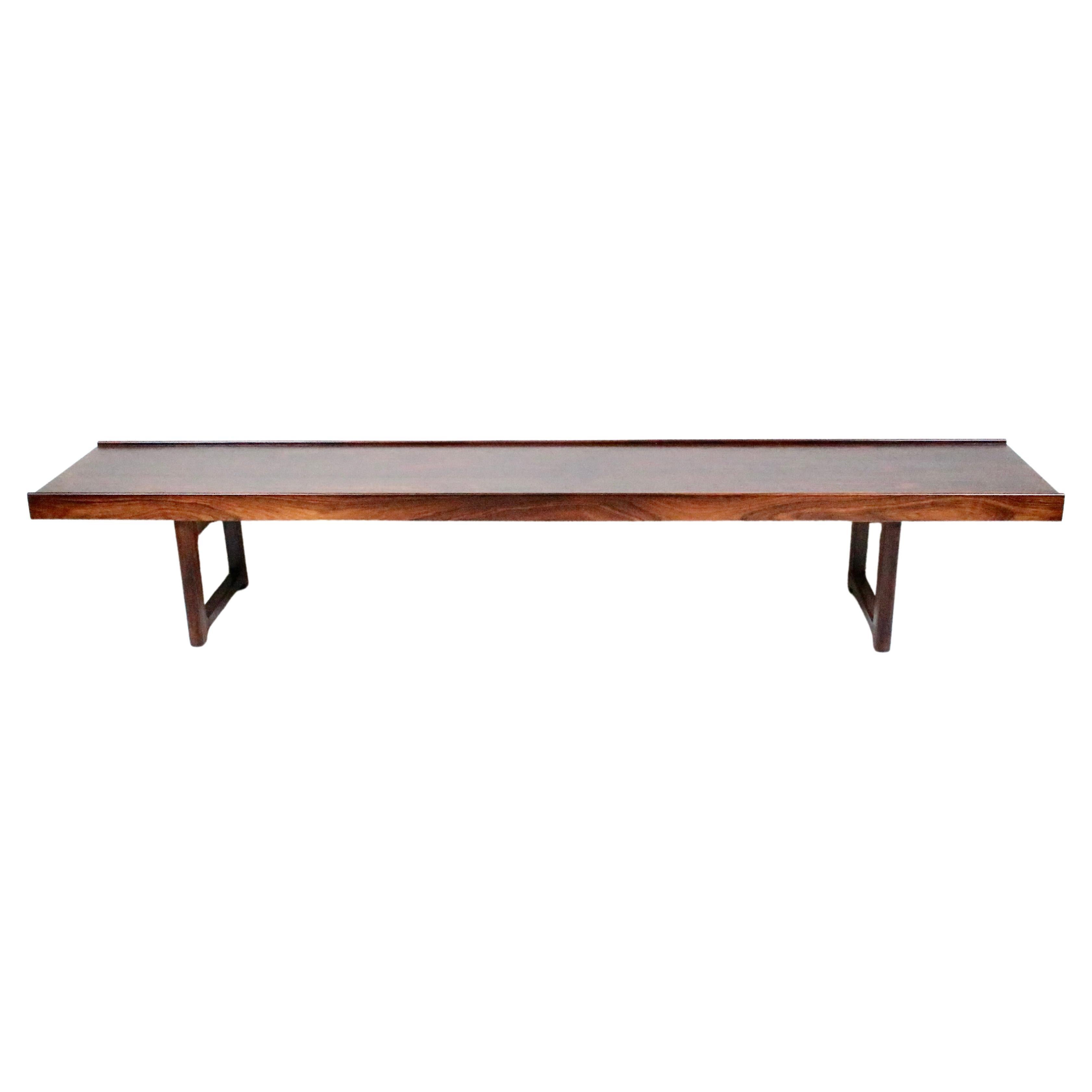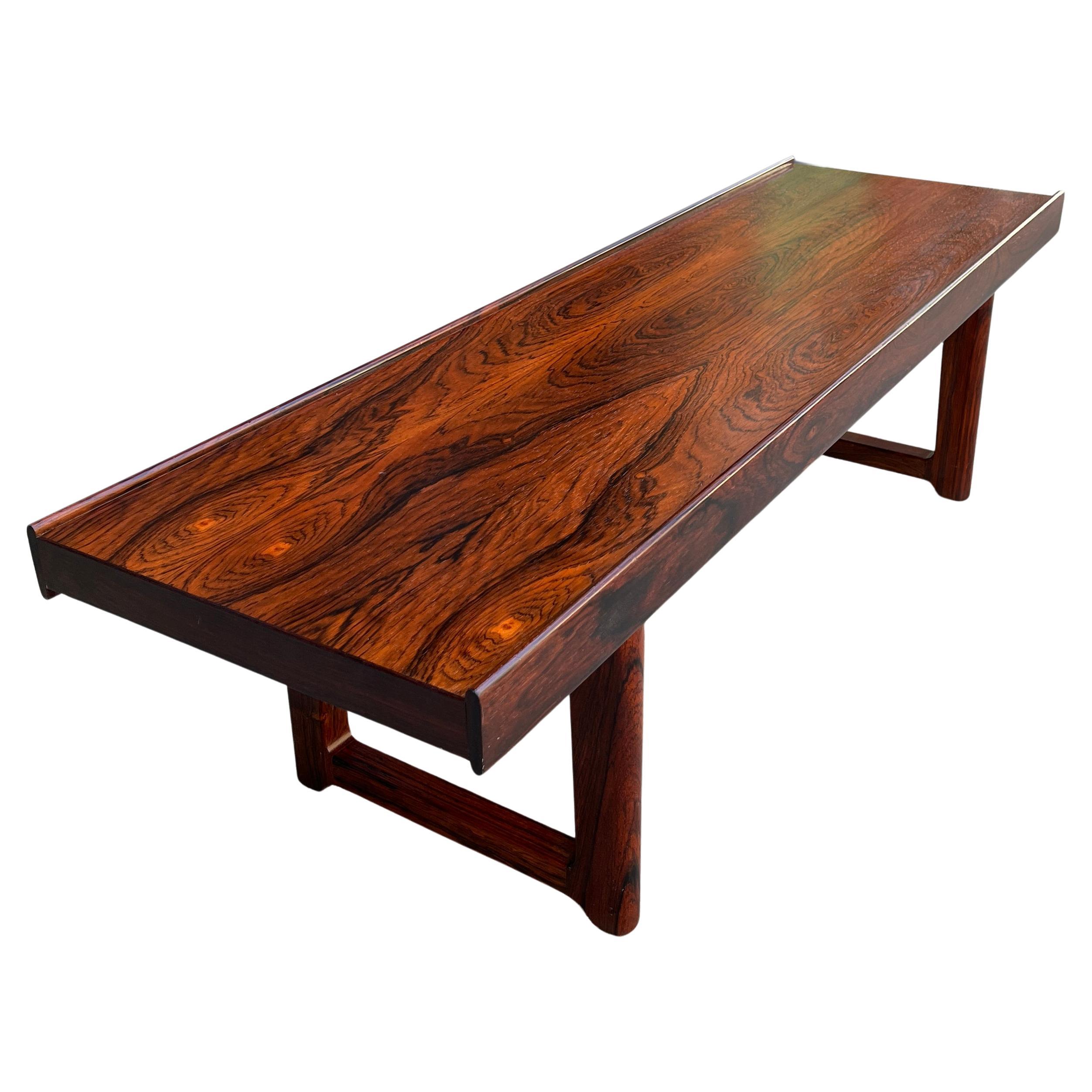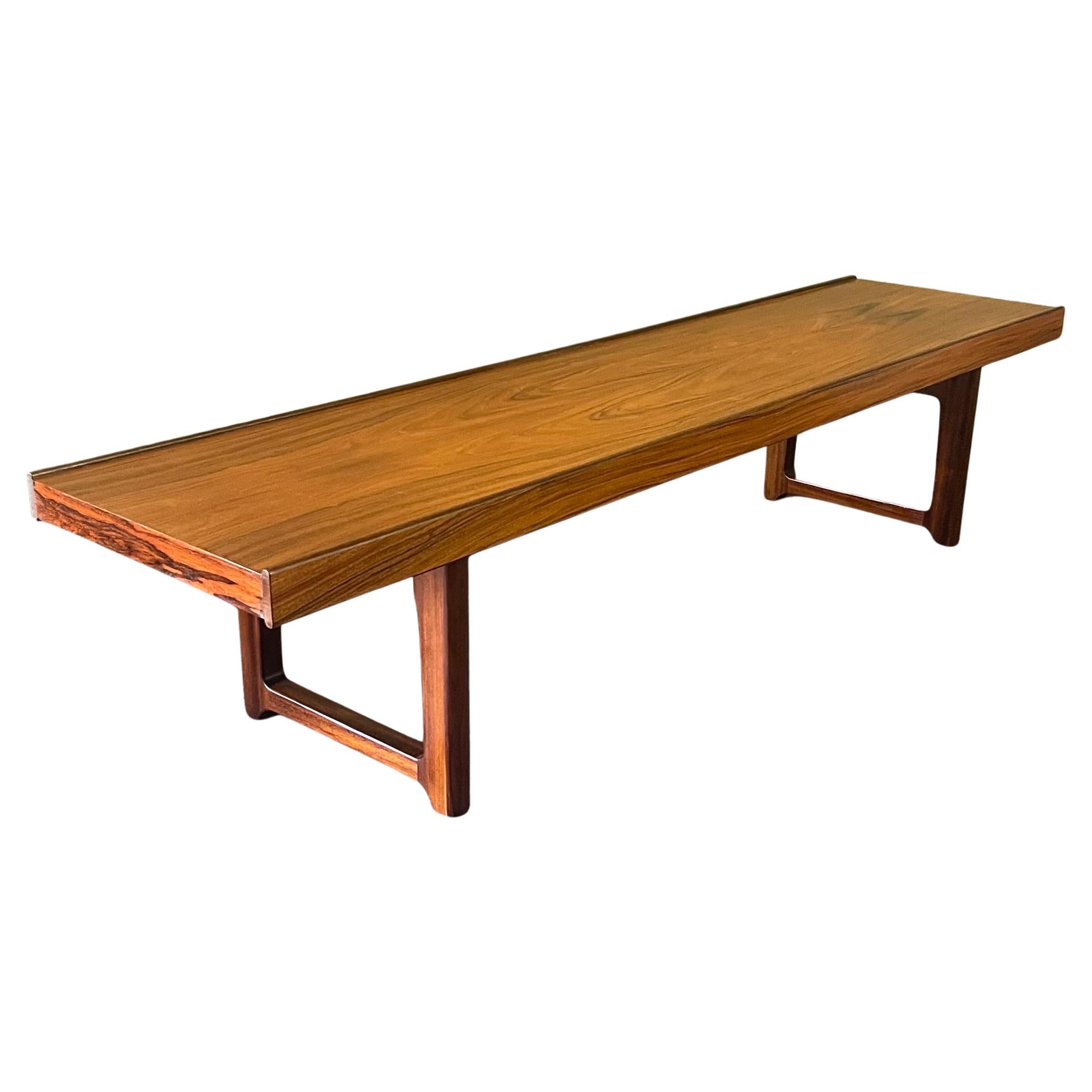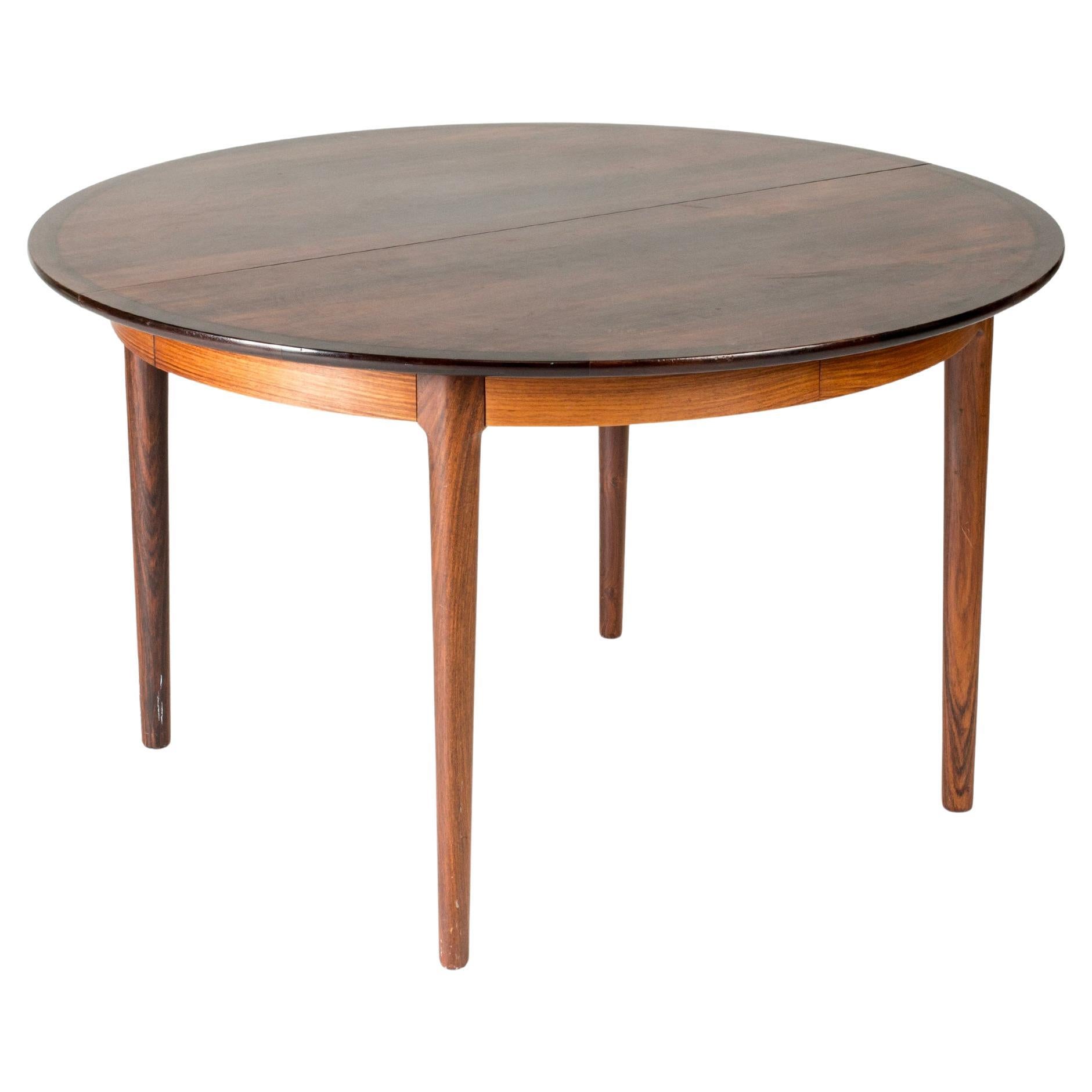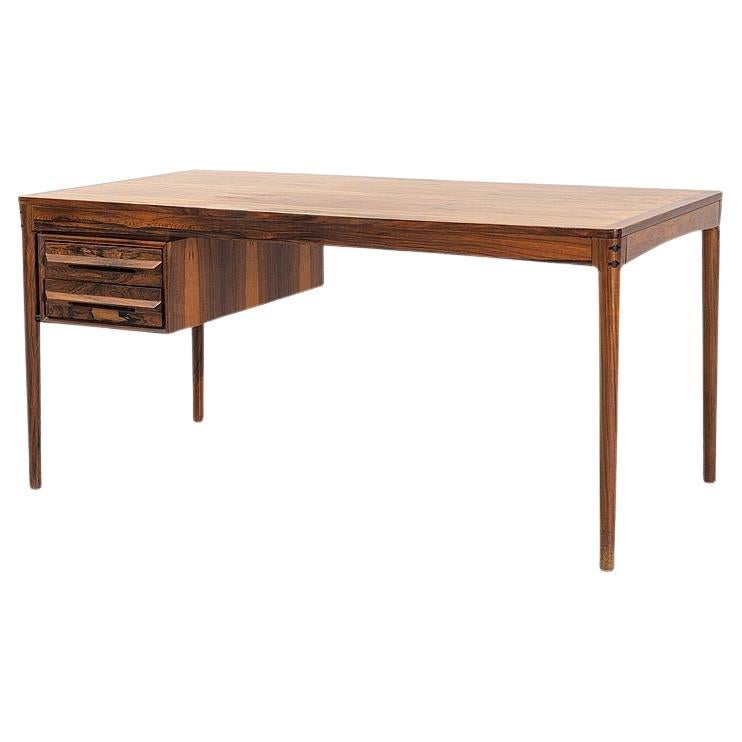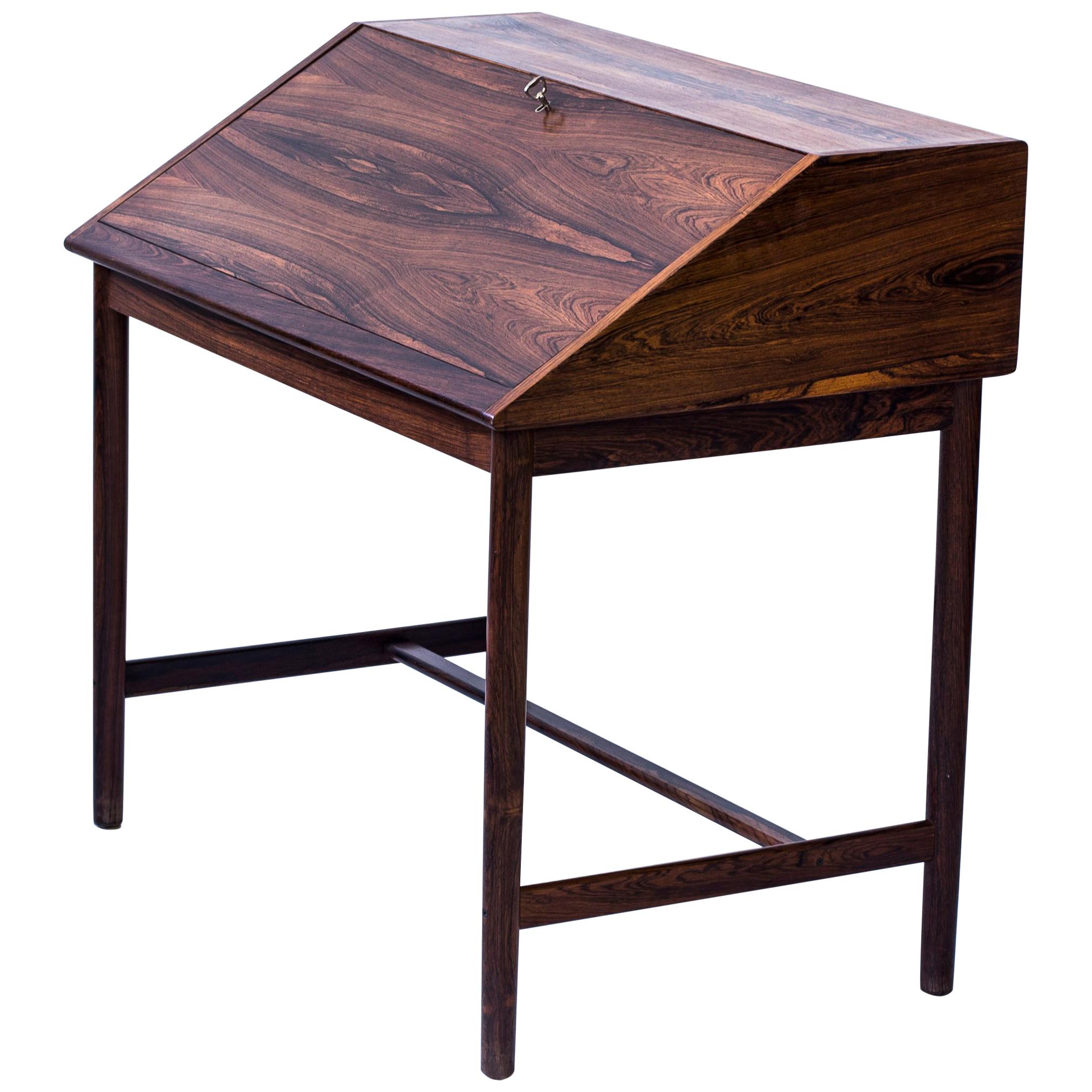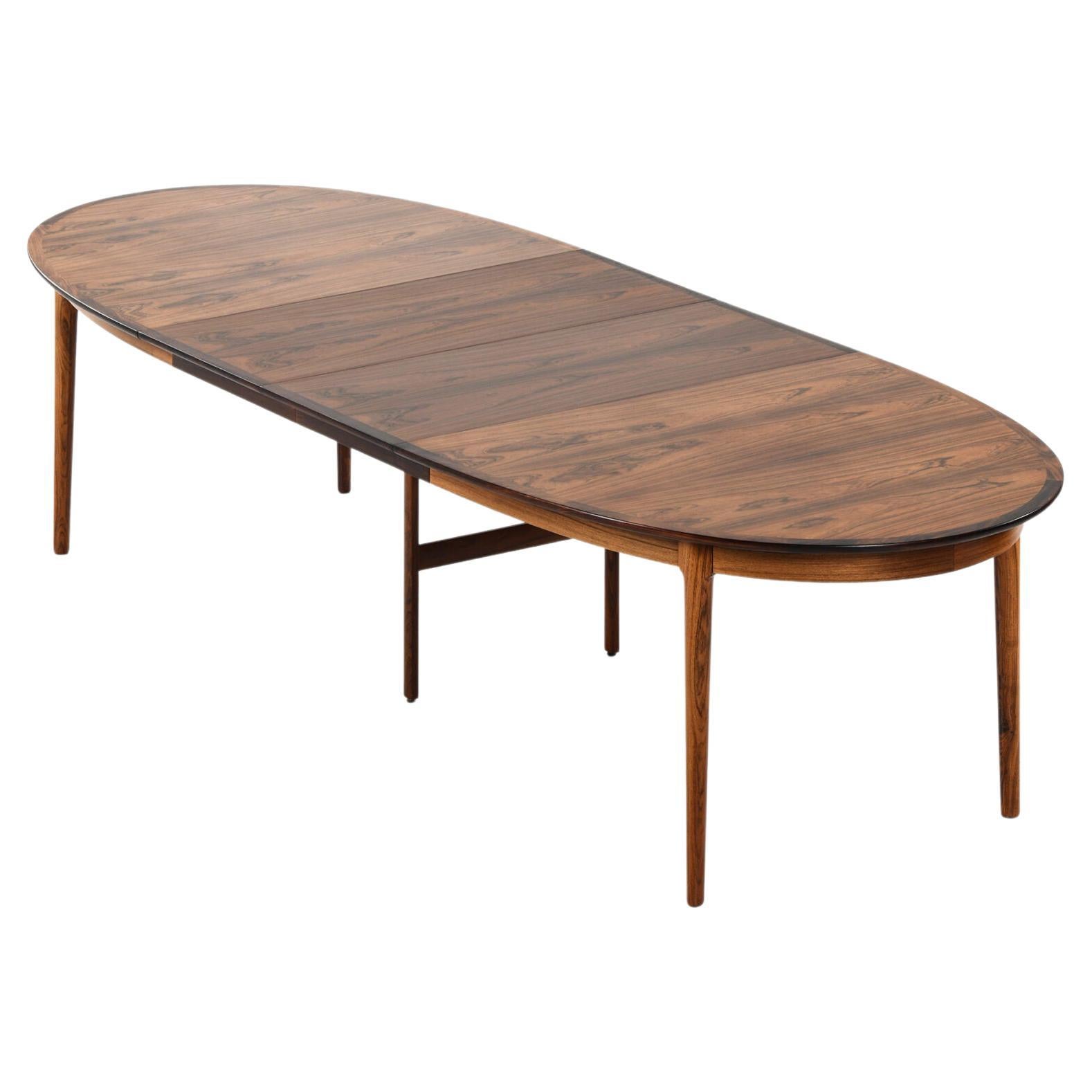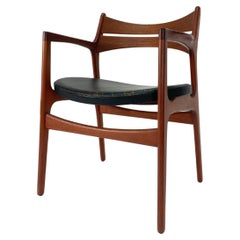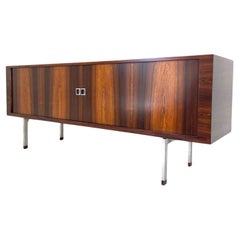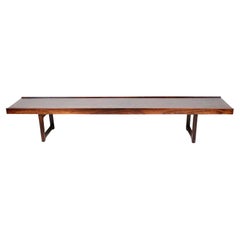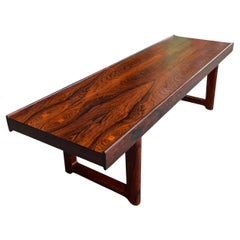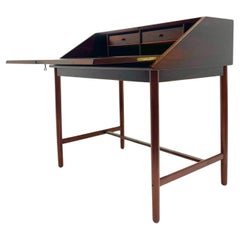
Rosewood Desk by Torbjorn Afdal for Bruksbo
View Similar Items
Video Loading
Want more images or videos?
Request additional images or videos from the seller
1 of 8
Rosewood Desk by Torbjorn Afdal for Bruksbo
About the Item
- Creator:Bruksbo (Manufacturer),Torbjørn Afdal (Designer)
- Dimensions:Height: 35.75 in (90.81 cm)Width: 37 in (93.98 cm)Depth: 24 in (60.96 cm)
- Style:Mid-Century Modern (Of the Period)
- Materials and Techniques:
- Place of Origin:
- Period:
- Date of Manufacture:unknown
- Condition:Refinished.
- Seller Location:San Diego, CA
- Reference Number:1stDibs: LU6417239511942
Torbjørn Afdal
Torbjørn Afdal was one of the leading designers at Bruksbo Tegnekontor and in Scandinavia. Afdal became more well known when his furniture was bought by US first lady Jacqueline Kennedy and by the Japanese Emperor. In later years, he was granted the commission to design the parliamentary and chairs and tables to the courthouse in Oslo.
About the Seller
5.0
Vetted Seller
These experienced sellers undergo a comprehensive evaluation by our team of in-house experts.
Established in 2020
1stDibs seller since 2022
44 sales on 1stDibs
Typical response time: 1 hour
More From This SellerView All
- Executive Desk By Poul Norreklit for Georg Petersen Møbelfabrik in DenmarkBy Georg Petersens Møbelfabrik, Poul NørreklitLocated in San Diego, CAPoul Nørreklit desk model GP 160 by Georg Petersens Møbelfabrik, Denmark This is a rare and collectible lucite and rosewood desk. Lucite slab sides wit...Category
Vintage 1970s Danish Mid-Century Modern Desks and Writing Tables
MaterialsLucite, Rosewood
- Erik Buch Teak Desk Chair with Arms for Christiansen MøbelfabrikBy Erik Buch, Christiansen MøbelfabrikLocated in San Diego, CAMid-Century desk chair designed by Erick Buch for Christiansen Møbelfabrik Denmark (only one pictured). Features a solid teak frame and beautifully curved backrest that provide suppo...Category
Mid-20th Century Danish Mid-Century Modern Chairs
MaterialsLeather, Teak
- Rare Hans Wegner RY-25 Rosewood Sideboard for Ry MoblerBy Hans J. WegnerLocated in San Diego, CAThe rarest and most sophisticated cabinet designed by the master of Danish Modern design executed in Brazilian rosewood and white oak. This exquisite credenza sits on brushed stainle...Category
Vintage 1950s Danish Scandinavian Modern Credenzas
MaterialsMetal
- George Nelson Rosewood Thin Edge 4 drawer Dresser by Herman Miller #2By George NelsonLocated in San Diego, CAA rosewood thin edge chest designed by George Nelson for Herman Miller with exquisite rosewood grain and early original white porcelain handles. The George Nelson Rosewood Thin Edge 4-drawer Dresser, crafted by Herman Miller, epitomizes the timeless elegance and functional sophistication synonymous with mid-century modern design. This dresser stands as an iconic piece within the George Nelson collection, renowned for its clean lines, minimalist aesthetic, and impeccable craftsmanship. This particular example boasts exquisite rosewood grain and early original white porcelain handles. Constructed from rich rosewood veneer, the dresser boasts a warm, organic hue that exudes luxury and refinement. Its slender profile and thin edges create an illusion of lightness, enhancing the overall sense of modernity and grace. The 4 spacious drawers feature seamless integration of hardware, maintaining the dresser's sleek appearance while providing ample storage space for clothing, linens, or personal belongings. Each detail of the George Nelson Rosewood Thin Edge series reflects an unwavering commitment to both form and function. Its timeless design transcends trends, making it a versatile addition to any interior decor scheme, from minamalist to post-modern. Whether used in a bedroom, living area, or office space, this dresser elevates the ambiance with its understated elegance and unparalleled craftsmanship, showcasing the enduring legacy of George Nelson's visionary design ethos. About the Designer: Not everyone thinks of George Nelson when they think “Modernism”—but they should. Here’s why: Looking at the outset of George Nelson’s career, few would have guessed that his legacy would crown him as one of the most influential individuals in Modernism—story has it that the young Ivy Leaguer stumbled into the Yale School of Architecture seeking shelter from the rain, and only then did he consider studying design. His legacy, though, would be one that touched nearly every corner of American Modernism as we think of it today. As an architect, author, furniture designer, graphic designer, exhibition designer, teacher, amateur photographer, and general provocateur, George Nelson shaped the course of design in America for over four decades. After completing his two Bachelor’s degrees (one in architecture, the other in fine arts), Nelson went on to accept a traveling fellowship in Rome, which interfaced him with figures like Ludwig Mies Van Der Rohe, Walter Gropius, Le Corbusier, and Gio Ponti all of which he interviewed forPencil Point, bringing the European vanguard to the attention of the magazine’s American readership. At this point in his career, Nelson had devoted himself to writing, joining Architectural Forum as its first associate editor in 1935. For nearly a decade, Nelson’s post as an editor brought him face-to-face with many of the leaders of the Modernism movement in the U.S., and through these exchanges, his own stance in the design world began to solidify. For Nelson, the purpose of design was to improve the world in accordance with the laws of nature—and while he hadn’t yet done much designing himself, he was busy teasing out the theoretical details of architecture. In 1940, Nelson co-authored Tomorrow’s House with Henry Wright, and the book went on to be a great commercial success, introducing concepts like the “family room,” and more broadly assuming a solutions-based perspective for architectural design. It wasn’t long before the book earned him the favorable attention of D.J. Depree, the chairman of Herman Miller the American furniture manufacture. Despite Nelson’s inexperience in furniture design, Depree saw potential in the writer’s approach to the industry: solutions-oriented design with a practical lean. Nelson became the company’s Director of Design in 1947, under the condition that he be allowed to continue his work outside of the company. From 1947 to 1972, Nelson oversaw the design department at Herman Miller, bringing in the icons that would shape some of the most memorable pieces of mid-century design, from such people as Ray and Charles Eames and Harry Bertoia to Richard Schultz, Donald Knorr, and Isamu Noguchi. Beginning in the mid-1950s, Nelson’s own design firm began its work in earnest, producing furniture and pioneering a ubiquitous incorporation of design, bringing that same consideration for pragmatism and aesthetics to advertising and marketing materials, image management, and graphic programs. His own firm incorporated in 1955, tapping many of the same designers from the Herman Miller roster for collaborations under George Nelson Associates, Inc. It was during this period of Nelson’s life and career that many of his most iconic designs came onto the scene—many will be instantly familiar furniture silhouettes that perhaps you didn’t know sprung from George Nelson himself. Designing his first collection in 1945 and appointed design director in 1947, Nelson quickly expanded his purview and transformed the company. Confirming De Pree’s early assessment of Nelson as someone “thinking well ahead of the parade,” he redesigned everything from Herman Miller’s product line to its graphics and marketing and advertising materials. Over the course of his long association with Herman Miller, Nelson designed hundreds of pieces of furniture and recruited other designers, including Charles and Ray Eames, Alexander Girard, and Isamu Noguchi, now all widely acknowledged as some of the brightest talents of the time. Nelson developed his own designs—from furniture to architecture, and exhibitions to graphics—in his New York City studio, known variously over the years as George Nelson, George Nelson & Associates, and George Nelson and Company. The staff included significant designers in their own right such as Irving Harper, George Mulhauser, Ernest Farmer, Gordon Chadwick, George Tscherny...Category
Vintage 1950s American Mid-Century Modern Dressers
MaterialsAluminum
$5,864 Sale Price20% Off - George Nelson Rosewood Thin Edge 4 drawer Dresser by Herman Miller #1By George NelsonLocated in San Diego, CAA rosewood thin edge chest designed by George Nelson for Herman Miller with exquisite rosewood grain and early original white porcelain handles. The George Nelson Rosewood Thin Edge 4-drawer Dresser, crafted by Herman Miller, epitomizes the timeless elegance and functional sophistication synonymous with mid-century modern design. This dresser stands as an iconic piece within the George Nelson collection, renowned for its clean lines, minimalist aesthetic, and impeccable craftsmanship. This particular example boasts exquisite rosewood grain and early original white porcelain handles. Constructed from rich rosewood veneer, the dresser boasts a warm, organic hue that exudes luxury and refinement. Its slender profile and thin edges create an illusion of lightness, enhancing the overall sense of modernity and grace. The 4 spacious drawers feature seamless integration of hardware, maintaining the dresser's sleek appearance while providing ample storage space for clothing, linens, or personal belongings. Each detail of the George Nelson Rosewood Thin Edge series reflects an unwavering commitment to both form and function. Its timeless design transcends trends, making it a versatile addition to any interior decor scheme, from minamalist to post-modern. Whether used in a bedroom, living area, or office space, this dresser elevates the ambiance with its understated elegance and unparalleled craftsmanship, showcasing the enduring legacy of George Nelson's visionary design ethos. About the Designer: Not everyone thinks of George Nelson when they think “Modernism”—but they should. Here’s why: Looking at the outset of George Nelson’s career, few would have guessed that his legacy would crown him as one of the most influential individuals in Modernism—story has it that the young Ivy Leaguer stumbled into the Yale School of Architecture seeking shelter from the rain, and only then did he consider studying design. His legacy, though, would be one that touched nearly every corner of American Modernism as we think of it today. As an architect, author, furniture designer, graphic designer, exhibition designer, teacher, amateur photographer, and general provocateur, George Nelson shaped the course of design in America for over four decades. After completing his two Bachelor’s degrees (one in architecture, the other in fine arts), Nelson went on to accept a traveling fellowship in Rome, which interfaced him with figures like Ludwig Mies Van Der Rohe, Walter Gropius, Le Corbusier, and Gio Ponti all of which he interviewed forPencil Point, bringing the European vanguard to the attention of the magazine’s American readership. At this point in his career, Nelson had devoted himself to writing, joining Architectural Forum as its first associate editor in 1935. For nearly a decade, Nelson’s post as an editor brought him face-to-face with many of the leaders of the Modernism movement in the U.S., and through these exchanges, his own stance in the design world began to solidify. For Nelson, the purpose of design was to improve the world in accordance with the laws of nature—and while he hadn’t yet done much designing himself, he was busy teasing out the theoretical details of architecture. In 1940, Nelson co-authored Tomorrow’s House with Henry Wright, and the book went on to be a great commercial success, introducing concepts like the “family room,” and more broadly assuming a solutions-based perspective for architectural design. It wasn’t long before the book earned him the favorable attention of D.J. Depree, the chairman of Herman Miller the American furniture manufacture. Despite Nelson’s inexperience in furniture design, Depree saw potential in the writer’s approach to the industry: solutions-oriented design with a practical lean. Nelson became the company’s Director of Design in 1947, under the condition that he be allowed to continue his work outside of the company. From 1947 to 1972, Nelson oversaw the design department at Herman Miller, bringing in the icons that would shape some of the most memorable pieces of mid-century design, from such people as Ray and Charles Eames and Harry Bertoia to Richard Schultz, Donald Knorr, and Isamu Noguchi. Beginning in the mid-1950s, Nelson’s own design firm began its work in earnest, producing furniture and pioneering a ubiquitous incorporation of design, bringing that same consideration for pragmatism and aesthetics to advertising and marketing materials, image management, and graphic programs. His own firm incorporated in 1955, tapping many of the same designers from the Herman Miller roster for collaborations under George Nelson Associates, Inc. It was during this period of Nelson’s life and career that many of his most iconic designs came onto the scene—many will be instantly familiar furniture silhouettes that perhaps you didn’t know sprung from George Nelson himself. Designing his first collection in 1945 and appointed design director in 1947, Nelson quickly expanded his purview and transformed the company. Confirming De Pree’s early assessment of Nelson as someone “thinking well ahead of the parade,” he redesigned everything from Herman Miller’s product line to its graphics and marketing and advertising materials. Over the course of his long association with Herman Miller, Nelson designed hundreds of pieces of furniture and recruited other designers, including Charles and Ray Eames, Alexander Girard, and Isamu Noguchi, now all widely acknowledged as some of the brightest talents of the time. Nelson developed his own designs—from furniture to architecture, and exhibitions to graphics—in his New York City studio, known variously over the years as George Nelson, George Nelson & Associates, and George Nelson and Company. The staff included significant designers in their own right such as Irving Harper, George Mulhauser, Ernest Farmer, Gordon Chadwick, George Tscherny...Category
Vintage 1950s American Mid-Century Modern Dressers
MaterialsAluminum
- Knud Joos Rosewood Side TableLocated in San Diego, CAKnud Joos Rosewood Side Table with beautiful steal frame. Dimensions: 16.5 L x 16.5 W x 16.25H About the Designer: Knud Joos was a Danish furniture designer and craftsman know...Category
Vintage 1940s Danish Mid-Century Modern Side Tables
MaterialsSteel
You May Also LikeView All
- Torbjorn Afdal for Bruksbo Norway Rosewood "Krobo" Coffee Table, BenchBy Bruksbo, Torbjørn AfdalLocated in Bainbridge, NYTorbjorn Afdal solid dark rosewood table, bench by Bruksbo Mellenstrands Norway. Featuring a sturdy, lipped and, balanced rectangular framework in smoothly grained dark Rosewood, wit...Category
Vintage 1960s Norwegian Scandinavian Modern Coffee and Cocktail Tables
MaterialsSteel
- Mid - Century Modern Rosewood Desk by Torbjørn Afdal, Norway 1960sBy Torbjørn Afdal, Haug SnekkeriLocated in Bergen, NOSelling a wonderful desk in rosewood designed by Torbjørn Afdal for Bruksbo Tegnekontor, produced by Haug Snekkeri, Drawer section with four drawers, the key is missing but all draw...Category
Mid-20th Century Norwegian Mid-Century Modern Desks and Writing Tables
MaterialsRosewood
- Midcentury “Krobo” Table / Bench by Torbjørn Afdal for BruksboBy Bruksbo, Torbjørn AfdalLocated in BROOKLYN, NYMid-Century Scandinavian modern low coffee table / bench designed by Torbjørn Afdal for Bruksbo, Norway. This piece displays rich wood grains and sculpted edges. The perfect fit for ...Category
Mid-20th Century Norwegian Mid-Century Modern Coffee and Cocktail Tables
MaterialsSteel
- Low Profile Bench / Coffee Table in Rosewood by Torbjørn Afdal for BruksboBy Bruksbo, Torbjørn AfdalLocated in San Diego, CAA absolutley gorgeous low profile bench / coffee table in rosewood by Torbjørn Afdal for Bruksbo, circa 1960s. The piece is in very good vintage cond...Category
Late 20th Century Norwegian Scandinavian Modern Coffee and Cocktail Tables
MaterialsRosewood
$2,000 Sale Price20% Off - Coffee Table by Torbjørn Afdal for Bruksbo, Norway, 1960By Torbjørn Afdal, BruksboLocated in Los Angeles, CAWonderful, dark stained oak coffee table or side table by Torbjørn Afdal for Bruksbo, Norway, 1960.Category
Vintage 1960s Norwegian Scandinavian Modern Coffee and Cocktail Tables
MaterialsOak
- Midcentury dining table by Torbjørn Afdal for Bruksbo, Norway, 1960sBy Bruksbo, Torbjørn AfdalLocated in Stockholm, SEElegant rosewood dining table by Torbjørn Afdal, sleek and versatile with beautiful rich brown veneer. A versatile table that extends from a round table for four, in an up to 360 cm ...Category
Vintage 1960s Norwegian Scandinavian Modern Dining Room Tables
MaterialsRosewood
Recently Viewed
View AllMore Ways To Browse
Vintage Desk Lock
Vintage Lockable Desk
Mid Century Modern Desk With Lock
Torbjorn Afdal
Bruksbo Norway
Torbjorn Afdal Bruksbo
Norwegian Rosewood Table
Afdal Rosewood
Torbjorn Afdal Rosewood
Torbjorn Afdal For Bruksbo
Bruksbo Rosewood
Torbjorn Afdal Table
Rosewood L Desk
Norway Desk
Torbjorn Afdal Desk
Small Storage Mid Century Modern Tables
Antique Style Mahogany Writing Desk
Antique Desk Writing Set
